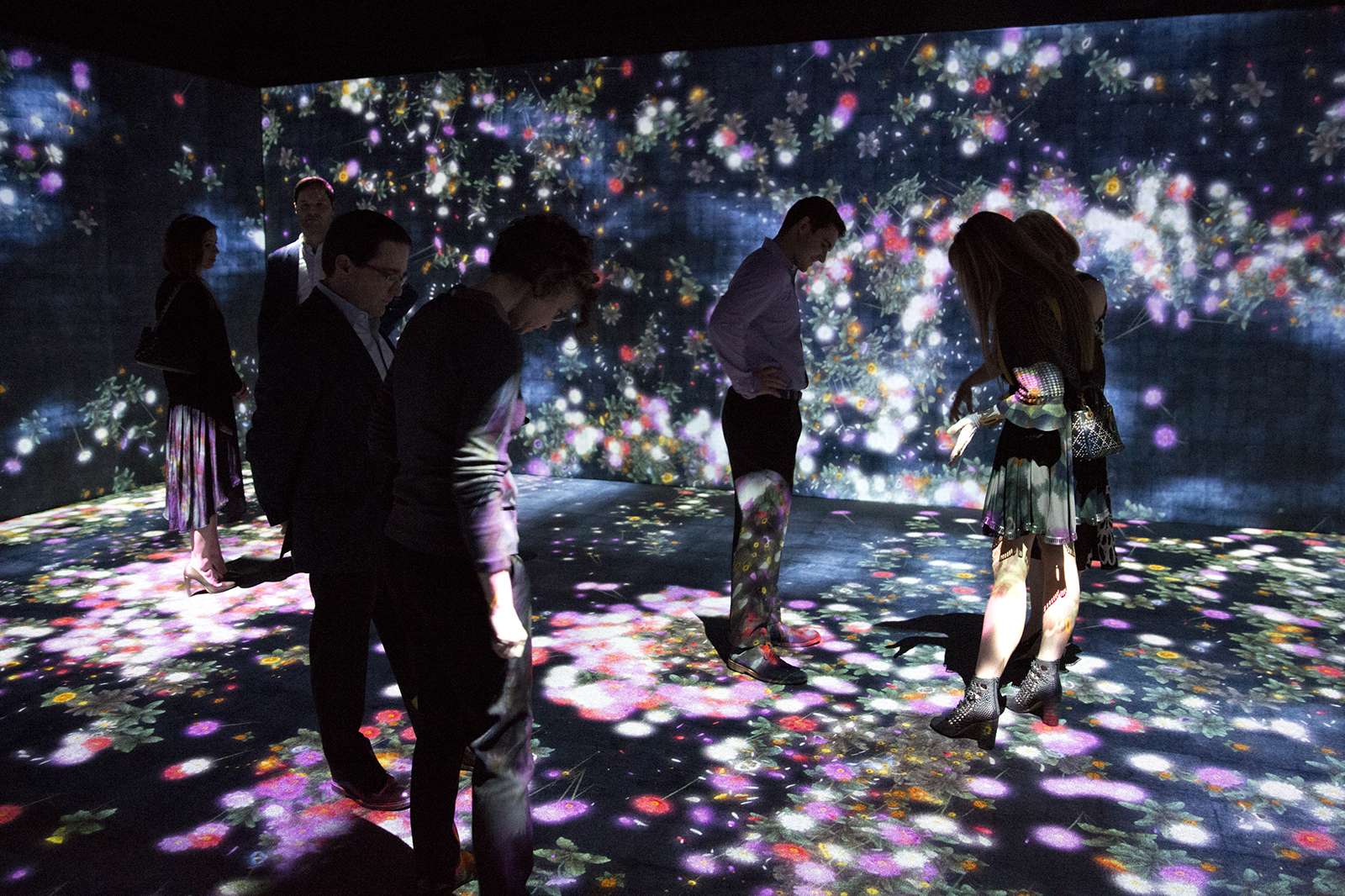teamLab– Cannot be Controlled but Live Together – A Whole Year per Hour
2017 Installation
Flowers and People – Cannot be Controlled but Live Together – A Whole Year per Hour is an interactive installation that addresses the theme of the seasons, which is central to Japanese culture and frequently reflected in Japanese art. teamLab is keenly aware of the importance of pre-modern Japanese art and consistently explores its legacy and relevance in the contemporary world.
Flowers and People was inspired by a visit to Kunisaki Peninsula in the spring, a time when cherry blossoms flourish around the mountains. Seeing this scenery led to questions for the group about human intervention in the ecosystem: what do humans plant and what is propagated by nature?
The animated installation features flowers, appearing from all sides, that gradually bud, blossom, grow and fade. Once a viewer steps close and is detected by sensors, the flowers sense the human presence and form around the visitor’s body, providing each visitor with a unique sensory experience of nature, as mediated through technology. The interaction between the viewer and the installation fuels the work, continually changing the animated states that cannot be replicated. It is the viewer’s presence that prompts the cycle the flowers will take.
About teamLab: teamLab, founded in 2001 in Tokyo by Toshiyuki Inoko, is an interdisciplinary group of ultratechnologists whose collaborative practice seeks to navigate the confluence of art, technology, design and the natural world. Rooted in the tradition of ancient Japanese Art and contemporary forms of anime, teamLab operates from a distinctly Japanese sense of spatial recognition, investigating human behavior in the information era and proposing innovative models for societal development.
The group states: “We are attempting to use a scientific approach to discover the logical structure of Ultra-subjective space by employing new digital methodology. Specifically, on a computer we build a 3D object in a 3D world, and then we explore a logical structure of space that makes the 3D space look flat, like Japanese art. We call that logical structure Ultra-subjective space.”
The group consists of artists, editors, programmers, engineers, mathematicians, architects, web and print graphic designers, and CG animators. Their purpose is to create a balance between technology, art, commerce and creativity and they do this by encompassing animation, sound, performance, internet, fashion, design, and medical science in their works.
teamLab’s works are in the permanent collection of Borusan Contemporary, Istanbul; The Asian Art Museum, San Francisco; The Asia Society Museum, New York; Art Gallery of South Australia, Adelaide; and Art Gallery of New South Wales, Sydney. They have been the subject of numerous exhibitions worldwide; in 2015, a projection work was exhibited on the façade of the Grand Palais, Paris.





